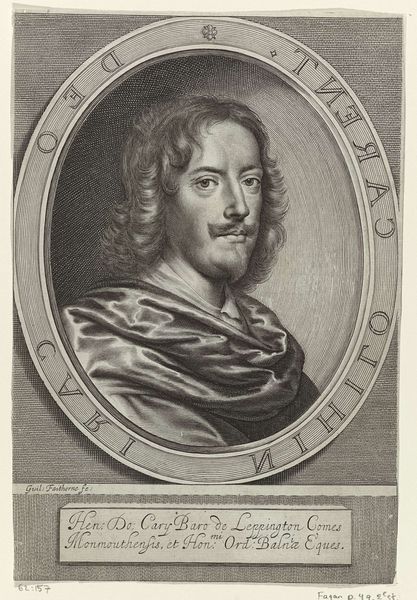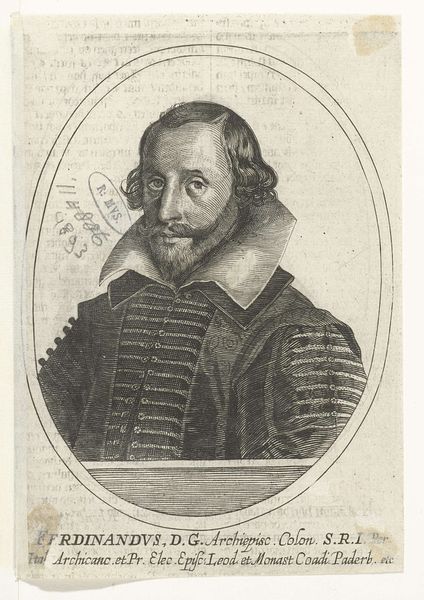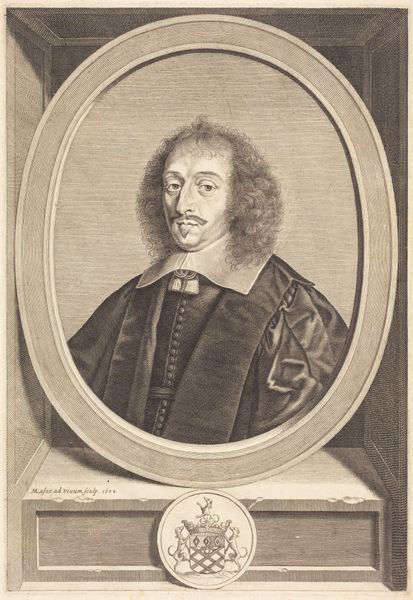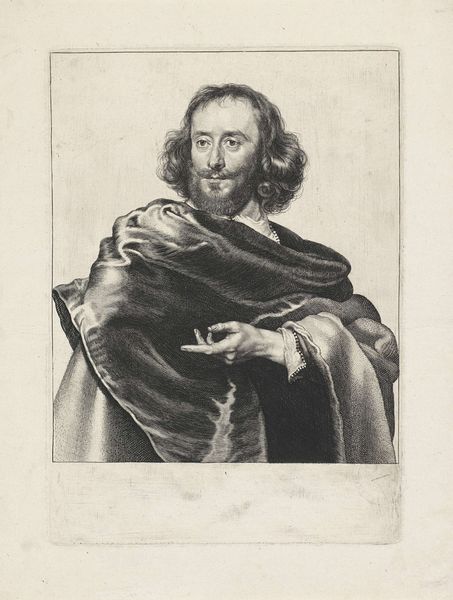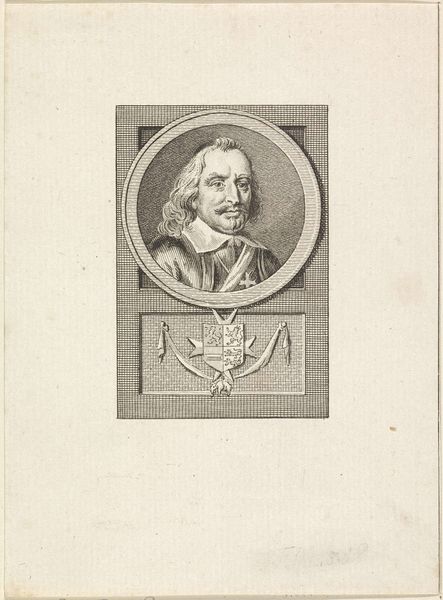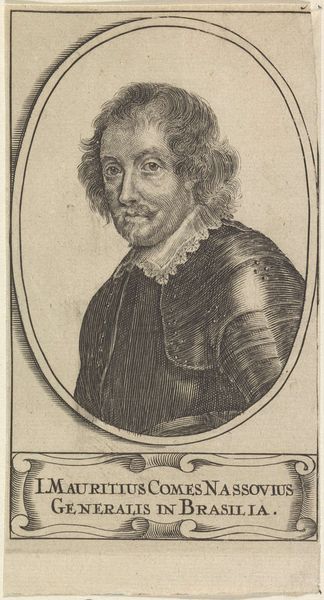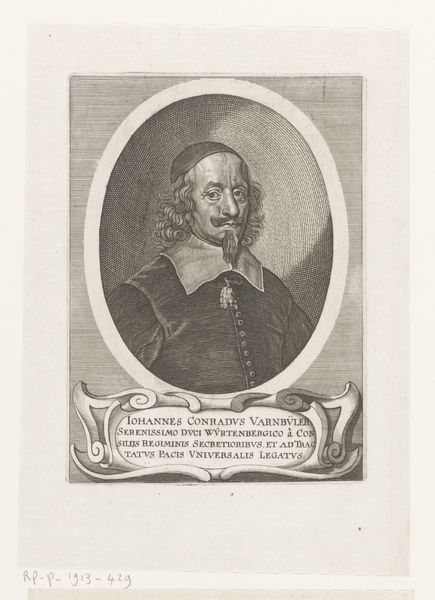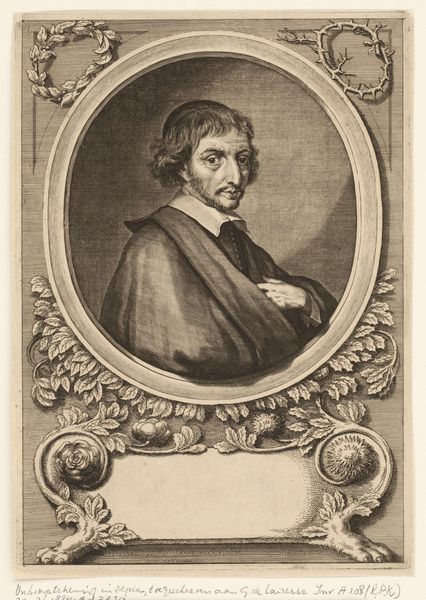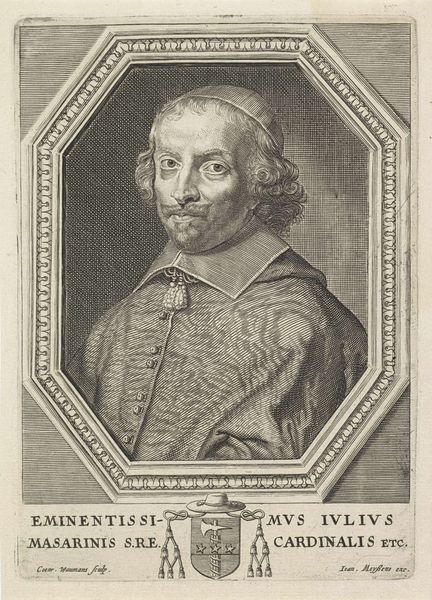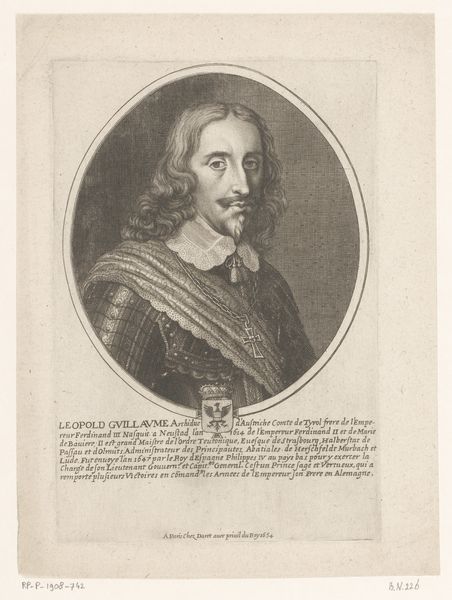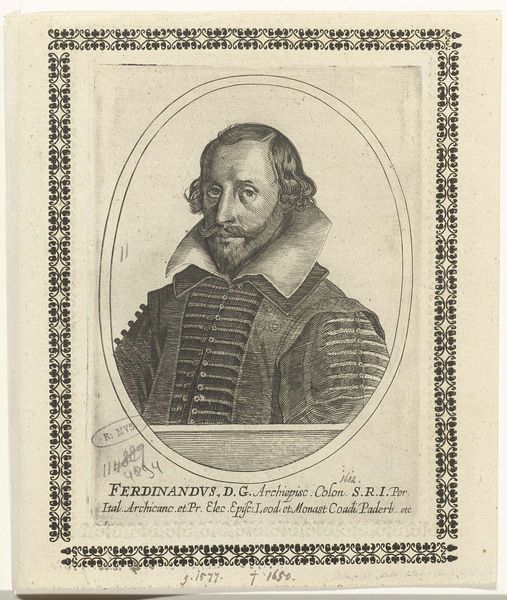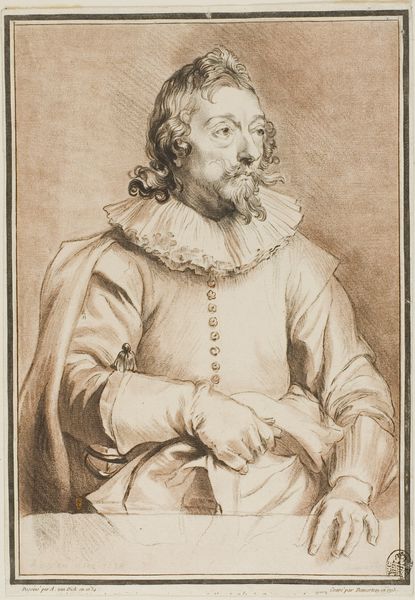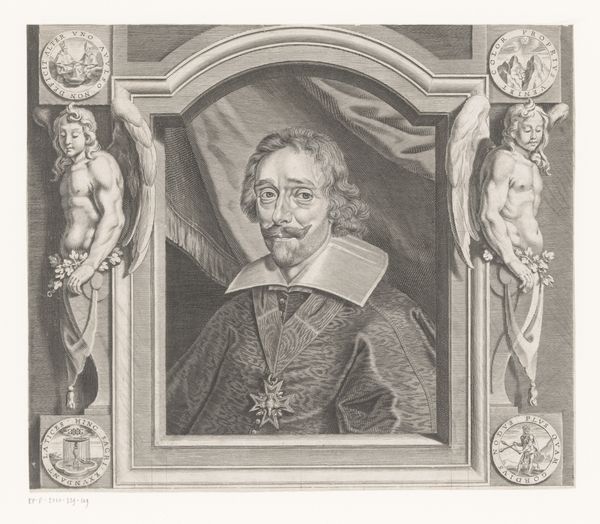
Portret van Johan Maurits, graaf van Nassau-Siegen c. 1770 - 1812
0:00
0:00
Dimensions: height 176 mm, width 119 mm
Copyright: Rijks Museum: Open Domain
Curator: Here we have a portrait of Johan Maurits, Count of Nassau-Siegen, rendered in the old engraving style by François Robert Ingouf. The print is dated circa 1770-1812. Editor: My first thought? Stern! And a little...constricted. That octagon frame really boxes him in, doesn't it? Makes you wonder what he's thinking, trapped in that formal pose. Curator: The very lines of that octagonal frame, indeed, serve as a visual analogue for the constraints of societal expectation within which such a figure was expected to operate. Note also the precise hatching, the considered application of light and shadow—techniques quite typical of Baroque portraiture meant to convey status and gravity. Editor: Right, "gravity." But doesn't the engraver's skill also subtly soften him? Like, beneath all that armour and duty, there's a person? Maybe that slight, almost amused curve to his lip... I get a feeling there's more to him than just a stiff portrait lets on. Curator: Consider that engraving, as a medium, by its inherent reproductive quality, amplifies the subject's image, allowing dissemination across varied social strata. Editor: Okay, agreed. Spreading the image, solidifying the legend, influencing public perception… But look closely – the artist’s choices in how the light falls, highlighting that glint in his eye, adds a spark, doesn't it? As if to hint that even in formal portraiture there's still room for personality, for maybe a wink and nudge at those expected societal roles. Curator: Yes, and those ornamental flourishes and carefully-rendered details within the Baroque context work in synergy with the likeness to elevate the sitter beyond the individual towards the realm of archetype. Editor: Alright, archetype, dissemination of power—all good points! But after looking longer at this old engraving, I appreciate that fleeting touch of humanity poking through! It is a clever artistic subversion, in an age of representation all about dominance and hierarchy. Curator: Ultimately, it offers a captivating case study into the intertwined dance of aesthetics and representation within the sociopolitical ecosystem of the 18th century. Editor: Exactly! A framed study of contrasts and subversions. Well put.
Comments
No comments
Be the first to comment and join the conversation on the ultimate creative platform.
